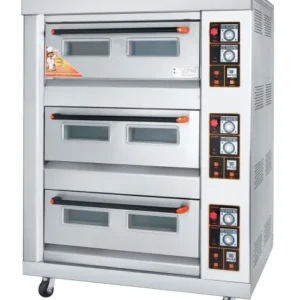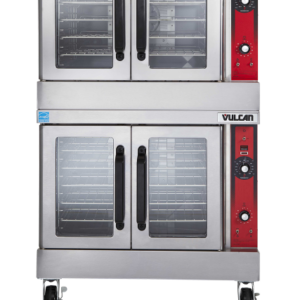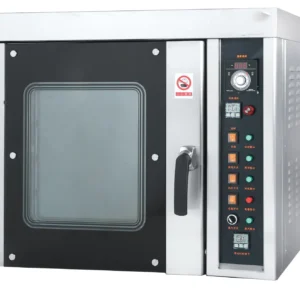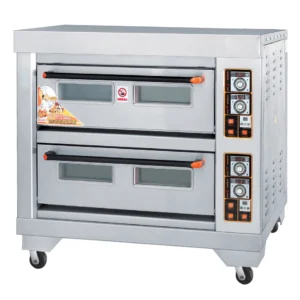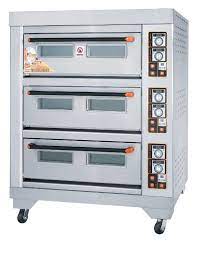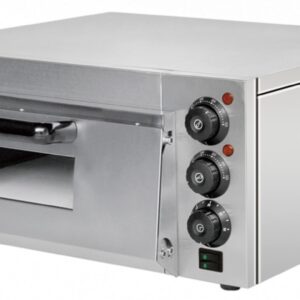A Guide To Purchasing An Oven In Nigeria

Introduction
An oven is a kitchen appliance used for baking, roasting, heating, and drying food. It operates by generating heat through gas, electricity, or other fuel sources, which is then evenly distributed throughout the cooking chamber. Ovens come in various types, sizes, and features, making it important to select one that meets your specific cooking needs.
An oven is one of the most essential kitchen appliances, especially for those who enjoy baking, roasting, and grilling. Whether you’re setting up a new kitchen, upgrading your current appliances, or starting a food business, purchasing the right oven is crucial. In Nigeria, where the culinary culture is diverse and vibrant, the demand for reliable and efficient ovens is ever-growing. However, with the wide variety of options available in the market, choosing the right oven can be overwhelming. This comprehensive guide will help you navigate the process of purchasing an oven in Nigeria, ensuring that you make an informed decision.
Exploring Various Oven Types and Their Features
Gas Ovens:
A gas oven is a kitchen appliance that uses natural gas or propane as its fuel source to cook food. It utilizes open flames generated by burners located at the bottom of the oven cavity to heat the air and cook food from the bottom up. Known for their quick heating and precise temperature control, gas ovens are favored by many chefs for their responsiveness. They’re ideal for achieving evenly cooked results, making them suitable for a wide range of cooking techniques.
| Pros | Cons |
| Precise temperature control: Gas ovens offer a more responsive and precise level of temperature control compared to electric ovens. This allows for quicker adjustments and finer control over the cooking process, which can be beneficial for certain baking techniques like bread making or delicate dishes. | Safety concerns: Gas ovens involve an open flame, which can pose a safety risk if not handled properly. This is especially important to consider in households with young children or pets. |
| Faster preheating: Gas ovens generally preheat significantly faster than electric ovens due to the direct heat from the burners. This can save time and energy, especially when cooking multiple dishes or baking frequently. | Installation: Gas ovens require professional installation due to the gas line connection, which can add to the initial cost. |
| Even cooking: Many users report experiencing even cooking with gas ovens, particularly for items like roasted vegetables or pizzas. This is attributed to the radiant heat distribution from the gas burners. | Limited temperature range: While gas ovens offer precise control within their range, they may not reach the extremely high temperatures achievable with some electric ovens, which can be limiting for specific recipes. |
| Versatility: Gas ovens can often be used for broiling and other top-down cooking methods, offering versatility in a single appliance. Some models also come with additional features like stovetops or griddle functions. | Uneven heat distribution: Some users report experiencing hot spots within the oven cavity, which may require rotating dishes or adjusting rack positions more frequently compared to electric ovens. |
| Lower operating cost: In regions where natural gas is readily available and affordable, gas ovens can be more economical to operate compared to electric ovens. | Ventilation: Gas ovens require proper ventilation to remove fumes and heat generated during cooking. This may involve installing a dedicated hood or ensuring sufficient airflow in the kitchen. |
| Environmental impact: Natural gas combustion contributes to greenhouse gas emissions, which is a concern for environmentally conscious individuals. |
Electric Oven
An electric oven is a kitchen appliance that utilizes electricity as its energy source to cook food. It relies on electric heating elements located at the top, bottom, or both sides of the oven cavity to generate heat and cook food from various directions.
| Pros | Cons |
| Safety: Electric ovens eliminate the open flame and safety concerns associated with gas ovens, making them a safer option, especially in households with young children or pets. | Slower preheating: Compared to gas ovens, electric ovens generally take longer to preheat due to the reliance on heating elements to indirectly warm the air. |
| Easy installation: Electric ovens generally only require plugging into a standard electrical outlet, making installation simpler and potentially less expensive compared to gas ovens. | Less precise temperature control: While offering a wider range, electric ovens may not provide the same level of fine-tuned temperature control as gas ovens, which can be a drawback for certain cooking techniques. |
| Wider temperature range: Electric ovens typically offer a wider range of temperatures, reaching higher maximum temperatures than most gas ovens. This can be beneficial for certain baking recipes or dishes requiring high heat. | Higher operating cost: In regions with high electricity costs, electric ovens can be more expensive to operate compared to gas ovens. |
| More even heat distribution: Many electric ovens, especially those with convection technology, are known for their consistent and even heat distribution throughout the cavity, which can be helpful for baking cookies, cakes, and other pastries. | Limited broiling performance: Some users report electric ovens may not offer the same level of high heat and searing capabilities as gas ovens for broiling. |
| Modern features: Electric ovens often come equipped with various advanced features like self-cleaning options, digital displays, timers, and multiple cooking modes (bake, broil, roast, etc.), offering greater convenience and functionality. | Dependence on electricity: Electric ovens are inoperable during power outages, unlike gas ovens that can potentially function with a propane tank backup. |
| Environmentally friendly: Electric ovens do not contribute directly to greenhouse gas emissions from burning fuel, which is a benefit for environmentally conscious individuals. |
Hybrid Options
Combining the best of both worlds, hybrid ovens offer the flexibility of gas and electric cooking in a single appliance. They provide the responsiveness of gas for stovetop cooking and the even heat distribution of electric for oven baking.
Choosing the Right Oven: Size, Features, and Price Considerations
Selecting the perfect oven for your kitchen requires careful consideration of several factors: size, features, and price. Here’s a breakdown to guide you through the decision-making process:
Size
- Measure your available space: Before browsing models, meticulously measure the designated space for your oven in your kitchen. Ensure you account for clearance around the appliance for proper ventilation and heat dissipation.
- Consider your cooking needs: How often do you cook? Do you typically prepare large meals for your family or entertain frequently? These factors will influence the size you need. Opt for a larger oven with more capacity if you cook frequently or in bulk.
- Think about family size: If you have a small household, a compact oven might suffice. However, larger families may benefit from a bigger oven to accommodate larger dishes or multiple items simultaneously.
Features
- Basic features: Most ovens come standard with functions like bake, broil, and roast.
- Advanced features: Look for additional features depending on your specific needs and preferences. These may include:
- Convection: This technology circulates hot air for faster and more even cooking.
- Self-cleaning: Saves time and effort by cleaning the oven cavity at high temperatures.
- Digital display: Offers precise temperature control and easy monitoring.
- Multiple cooking modes: Options like defrost, proofing, or warming can enhance versatility.
Price
- Set a budget: Determine a realistic budget you’re comfortable allocating for your new oven.
- Price vs. features: Consider the features most important to you and prioritize those within your budget. Basic models with fewer features will generally be more affordable, while feature-rich options will come at a higher cost.
- Brand reputation: Research different brands and their reputation for quality, reliability, and customer service. While well-known brands may cost more, they often offer better warranties and support.
Additional Tips:
- Read reviews: Customer reviews can provide valuable insights into real-world experiences with different oven models.
- Compare specifications: Compare features, size, energy efficiency ratings, and warranty terms of different models to find the best value for your needs.
- Consider energy efficiency: Look for ovens with high energy star ratings to save on electricity costs in the long run.
- Think about aesthetics: Choose an oven that complements your kitchen’s overall design and style.
Exploring Specialty Ovens: Pizza Ovens, Dehydrators, and More
Conveyor Pizza Ovens
Conveyor ovens are a staple in fast-paced pizza environments. They are renowned for their consistency and ease of use.
How They Work: These ovens cook pizza by moving it through a heated chamber on a conveyor belt. The speed of the belt and the oven temperature are adjustable, ensuring that each pizza is cooked evenly.
Impact on Pizza: Conveyor ovens are excellent for uniformly cooking pizzas, making them ideal for restaurants that prioritize consistency and speed. However, they might lack the unique flavor characteristics imparted by more traditional methods.
Deck Pizza Ovens
Deck ovens are the choice for many artisanal pizza makers, delivering a balance between modern efficiency and traditional baking.
Mechanism: These ovens consist of one or more baking chambers, each with a stone deck. The pizza is cooked directly on this hot stone surface.
Pizza Quality: The porous nature of the stone deck absorbs moisture from the dough, resulting in a crispy crust. Deck ovens are excellent for achieving a more authentic and artisanal pizza, but they require more skill to operate efficiently.
Countertop Pizza Ovens
Countertop pizza ovens are a compact solution for spaces where a full-sized oven isn’t feasible.
Functionality: These ovens are designed to fit on a countertop and are suitable for smaller establishments or as a secondary oven. They can range from basic models that reheat frozen pizzas to more advanced versions that can cook fresh dough.
Pizza Outcome: While they may not achieve the same quality as larger, specialized ovens, countertop models are a practical choice for venues where pizza is not the main menu item but still a desirable offering.
Dehydrators:
Fruit Dehydrators: Fruit dehydrators are designed to remove moisture from fruits while preserving their natural flavors and nutrients. They feature adjustable temperature controls and airflow systems that ensure even drying without overheating. Fruit dehydrators are perfect for making homemade dried fruits, such as apple chips, banana slices, and mango strips, which make nutritious and delicious snacks.
Meat Dehydrators: Meat dehydrators are used to make jerky and other dried meat products by removing moisture and inhibiting bacterial growth. They feature low-temperature settings and air circulation systems that effectively dry meats while preserving their flavor and texture. Meat dehydrators are popular among outdoor enthusiasts, hunters, and home cooks looking to create their own jerky recipes.
Specialty Ovens:
Rotisserie Ovens: Rotisserie ovens are designed for cooking meats on a rotating spit, resulting in juicy, evenly cooked dishes with a crispy exterior. They feature adjustable spit speeds and temperature controls, allowing for precise cooking of various cuts of meat, poultry, and even whole chickens or turkeys. Rotisserie ovens are popular in restaurants, supermarkets, and catering operations for their ability to produce succulent, flavorful roasts.
Combi Ovens: Combi ovens combine the functions of convection ovens, steam ovens, and sometimes even grills or smokers into a single appliance. They offer versatility and flexibility, allowing chefs to roast, steam, bake, grill, and smoke foods with ease. Combi ovens feature programmable settings, humidity controls, and temperature probes, making them suitable for a wide range of cooking applications, from delicate pastries to hearty roasts.
Understanding Oven Settings: How to Use Your Oven Like a Pro
Mastering your oven settings is the key to achieving culinary excellence. Whether you’re baking, roasting, or broiling, understanding how to harness the power of your oven ensures delicious results. Let’s demystify those knobs and buttons.
Temperature Control:
Bake: The bake setting is used for standard baking and roasting. It evenly distributes heat from the bottom heating element, allowing for consistent cooking throughout.
Broil: The broil setting activates the top heating element only, producing intense heat from above. It’s ideal for quickly browning and crisping the surface of foods, such as meats, fish, and vegetables.
Convection Bake: Convection bake utilizes a fan to circulate hot air evenly throughout the oven cavity. It promotes faster and more even cooking, making it perfect for baking multiple trays of cookies, cakes, or pastries simultaneously.
Convection Roast: Similar to convection bake, convection roast uses the fan to circulate hot air, but at a higher temperature. It’s ideal for roasting meats, poultry, and vegetables, producing juicy, evenly cooked results with crispy exteriors.
Cooking Modes:
Standard Mode: In standard mode, both the upper and lower heating elements are activated, providing consistent heat from top to bottom. It’s suitable for most baking and roasting tasks.
Convection Mode: Convection mode activates the fan to circulate hot air, reducing cooking times and promoting even browning. It’s ideal for baking cookies, bread, and pastries, as well as roasting meats and vegetables.
Broil Mode: Broil mode activates the top heating element only, producing intense heat from above. It’s perfect for quickly searing meats, caramelizing vegetables, and achieving crispy toppings on casseroles and gratins.
Additional Features:
Preheat: Preheating your oven before cooking ensures that it reaches the desired temperature for optimal results. Always preheat your oven for baking, roasting, or broiling to ensure even cooking.
Timer: Most ovens are equipped with a timer function, allowing you to set a specific cooking time and receive an alert when the time elapses. Use the timer to prevent overcooking or burning your dishes.
Self-Cleaning: Some ovens feature a self-cleaning mode, which uses high heat to burn off food residue and grease. Follow the manufacturer’s instructions carefully when using the self-cleaning function to avoid damage to your oven.
Tips for Using Your Oven Like a Pro:
- Familiarize yourself with your oven’s settings and features by reading the owner’s manual and experimenting with different cooking modes.
- Invest in an oven thermometer to ensure accurate temperature readings and precise cooking results.
- Use the appropriate cookware for each cooking task, such as baking sheets, roasting pans, and oven-safe dishes.
- Rotate baking trays and pans halfway through the cooking process to ensure even browning and cooking.
- Keep your oven clean and well-maintained to prevent odors, smoke, and potential fire hazards.
Oven Maintenance Tips for Longevity and Efficiency
Taking care of your oven ensures it serves you well for years to come. Whether you’re a seasoned chef or a home cook, these maintenance tips will keep your oven in top shape:
Regular Cleaning:
Interior: Wipe down the interior after each use. Remove spills, crumbs, and grease promptly.
Racks and Trays: Clean removable racks and trays separately. Soak them in warm, soapy water if needed.
Door: Don’t forget the oven door! Clean the glass and seals to maintain visibility and prevent heat loss.
Self-Cleaning Mode:
Use the self-cleaning mode periodically. It heats the oven to high temperatures, burning off residue. Remember to remove racks before activating this mode.
Check Seals and Gaskets:
Inspect the door seals and gaskets for any signs of wear or damage. Replace them if necessary to maintain proper insulation.
Calibrate the Temperature:
Over time, oven thermostats can become inaccurate. Use an oven thermometer to check the actual temperature. Adjust the thermostat if needed.
Avoid Harsh Chemicals:
Stick to mild, non-abrasive cleaners. Harsh chemicals can damage the oven’s finish and affect its performance.
Ventilation Matters:
Ensure the oven vents are clear and unobstructed. Proper ventilation prevents overheating and helps with even cooking.
Inspect Burner Elements:
For electric ovens, check the heating elements. If they have visible damage or irregularities, replace them promptly.
Gas Ovens:
If you have a gas oven, ensure the burners ignite properly. Clean the burner ports if they’re clogged.
Avoid Spills During Cooking:
Use baking sheets or oven-safe containers to catch spills. This prevents residue buildup and makes cleaning easier.
Replace Faulty Parts Promptly:
If you notice issues like uneven cooking, strange smells, or malfunctioning controls, consult a professional technician. Timely repairs prevent further damage.
Remember, a well-maintained oven not only cooks better but also saves energy.

